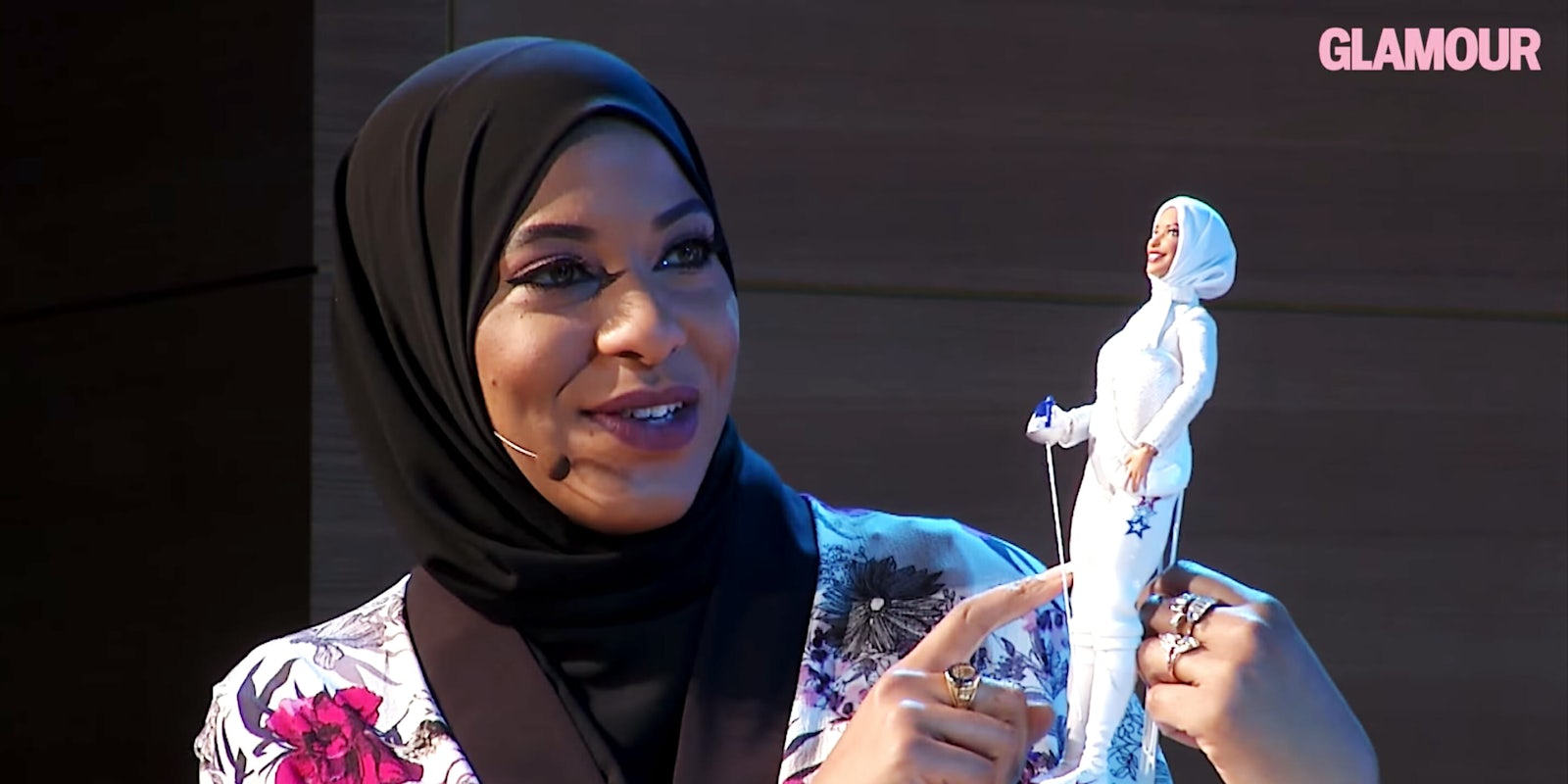In 2018, Barbie will wear a hijab—and young Muslim girls will finally see themselves represented in the iconic doll.
Barbie announced at the Glamour’s Women of the Year summit on Monday that Olympic fencer Ibtihaj Muhammad would be the next woman to be honored with a Barbie in her image for the doll’s “Shero” line, a program that celebrates boundary-breaking women intended to inspire the next generation.
Muhammad made headlines during the 2016 Summer Olympics when she became the first Muslim-American woman to compete while wearing a hijab and the first female Muslim-American to win a medal.
“Barbie is celebrating Ibtihaj not only for her accolades as an Olympian, but for embracing what makes her stand out,” Sejal Shah Miller, vice president of global marketing for Barbie, said in a press release. “Ibtihaj is an inspiration to countless girls who never saw themselves represented, and by honoring her story, we hope this doll reminds them that they can be and do anything.”
The doll will be the first ever Barbie to wear a hijab in history, according to People.
“I think it’s revolutionary for Barbie to take a stand in this moment that we’re in—and I would say, as a country, to have a doll wear a hijab and be the first of its kind,” Muhammed told People. “There has never been a Barbie doll to wear a hijab before. I’m really excited to have this moment happen in my life and also for all these little girls now who can shop for Barbie doll that may look them, may wear a hijab like they do, or like their mom does, or like a friend does. But also have kids who aren’t Muslim, who don’t wear a hijab, to also have the opportunity to play with a doll that wears a hijab.”
Barbie, Muhammad, and others took to Twitter to celebrate the ground-breaking announcement.
We are so excited to honor @IbtihajMuhammad with a one-of-a-kind #Barbie doll! Ibtihaj continues to inspire women and girls everywhere to break boundaries. #Shero #YouCanBeAnything #GlamourWOTY pic.twitter.com/oV0e6ClgL6
— Barbie (@Barbie) November 13, 2017
Thank you @Mattel for announcing me as the newest member of the @Barbie #Shero family! I’m proud to know that little girls everywhere can now play with a Barbie who chooses to wear hijab! This is a childhood dream come true
— Ibtihaj Muhammad (@IbtihajMuhammad) November 13, 2017#shero pic.twitter.com/py7nbtb2KD
LOVE this! @Barbie‘s first doll with a hijab is modeled after @IbtihajMuhammad. Representation matters. Black. Muslim. Magic. pic.twitter.com/W6ATi9xqTZ
— Britni Danielle (@BritniDWrites) November 13, 2017
I️ love this so much – congrats @IbtihajMuhammad – representation matters and can’t wait to buy one for my niece to add to her collection pic.twitter.com/aIw5QadYnN
— Anya Alvarez(@anya__alvarez) November 13, 2017
It’s so wonderful to see that @Barbie is making a one-of-a-kind doll of Olympic fencer @IbtihajMuhammad, saying she “continues to inspire women and girls everywhere to break boundaries.” https://t.co/SQ6zS97rVX
— Hachette Books (@HachetteBooks) November 13, 2017
Muhammad told HuffPost the announcement was extra special to her because she grew up playing with Barbies that represented inclusion and diversity.
“My mom made efforts when I was a kid to bring dolls into the house that were only dolls of color,” she said. “So I only had brown Barbie dolls growing up and I think that was an effort made by my parents to see us reflected in the dolls we played with. It’s revolutionary to make all kids—no matter your skin color, your gender, your ethnicity, your religious beliefs—feel included.”



